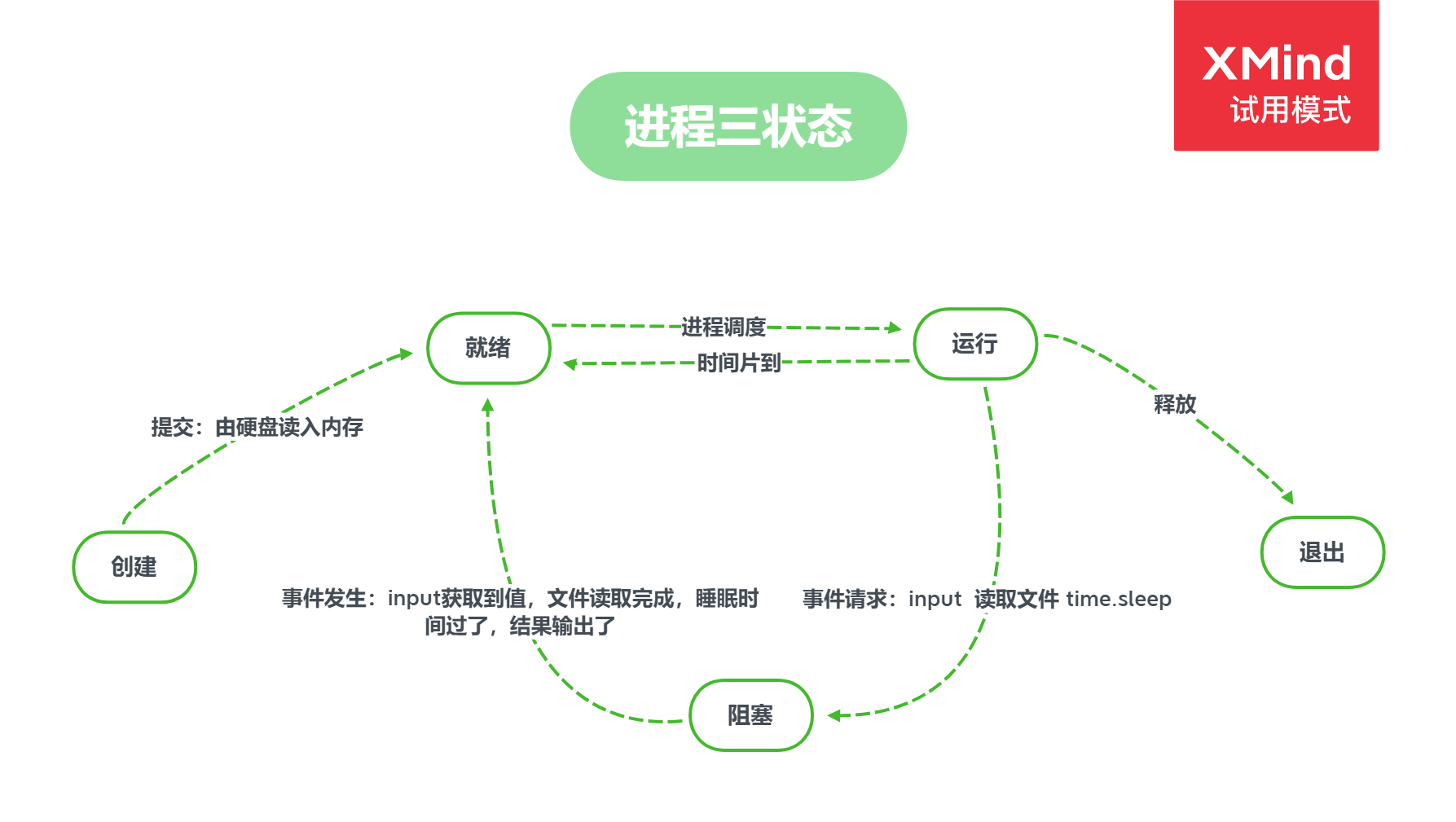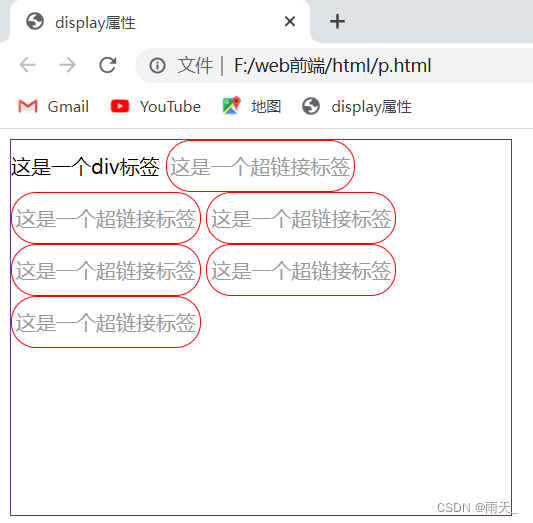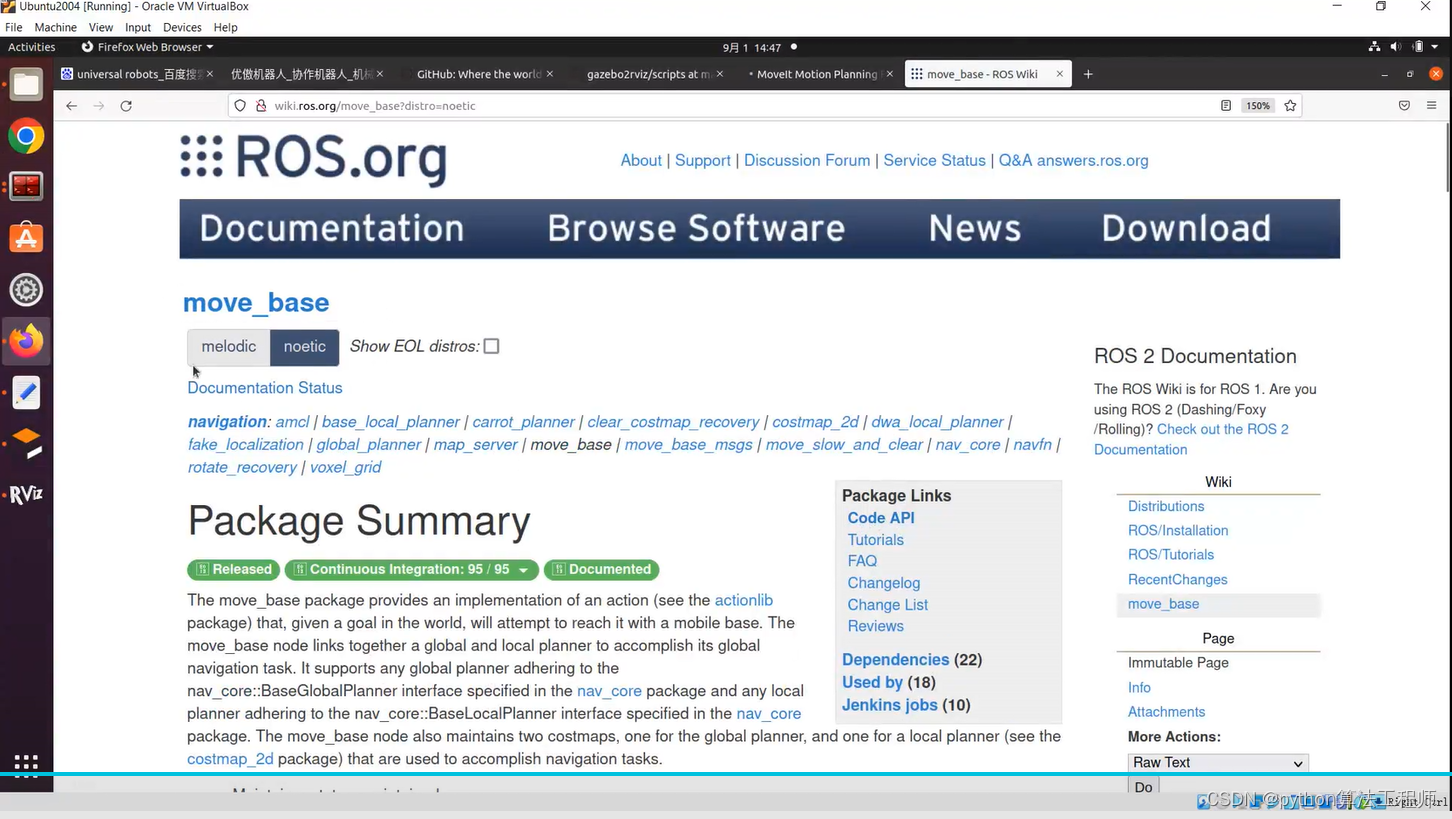第1关:什么是决策树:
如何构造出一棵好的决策树呢?其实构造决策树时会遵循一个指标,有的是按照信息增益来构建,如ID3算法;有的是信息增益率来构建,如C4.5算法;有的是按照基尼系数来构建的,如CART算法。但不管是使用哪种构建算法,决策树的构建过程通常都是一个递归选择最优特征,并根据特征对训练集进行分割,使得对各个子数据集有一个最好的分类的过程。
这一过程对应着对特征空间的划分,也对应着决策树的构建。一开始,构建决策树的根结点,将所有训练数据都放在根结点。选择一个最优特征,并按照这一特征将训练数据集分割成子集,使得各个子集有一个在当前条件下最好的分类。如果这些子集已经能够被基本正确分类,那么构建叶子结点,并将这些子集分到所对应的叶结点中去;如果还有子集不能被基本正确分类,那么就对这些子集选择新的最优特征,继续对其进行分割,并构建相应的结点。如此递归进行下去,直至所有训练数据子集被基本正确分类,或者没有合适的特征为止。最后每个子集都被分到叶子结点上,即都有了明确的类别。这就构建出了一棵决策树。
-
1、下列说法正确的是?
A、训练决策树的过程就是构建决策树的过程
B、ID3算法是根据信息增益来构建决策树
C、C4.5算法是根据基尼系数来构建决策树
D、决策树模型的可理解性不高
-
2、下列说法错误的是?
A、从树的根节点开始,根据特征的值一步一步走到叶子节点的过程是决策树做决策的过程
B、决策树只能是一棵二叉树
C、根节点所代表的特征是最优特征
答案:1、AB 2、B
第2关:信息熵与信息增益:
1948年,香农提出了“信息熵”的概念,才解决了对信息的量化度量问题。信息熵这个词是香农从热力学中借用过来的。热力学中的热熵是表示分子状态混乱程度的物理量。香农用信息熵的概念来描述信源的不确定度。信源的不确定性越大,信息熵也越大。
接下来看看什么是信息增益。所谓的信息增益就是表示我已知条件X后能得到信息Y的不确定性的减少程度。就好比,我在玩读心术。你心里想一件东西,我来猜。我已开始什么都没问你,我要猜的话,肯定是瞎猜。这个时候我的熵就非常高。然后我接下来我会去试着问你是非题,当我问了是非题之后,我就能减小猜测你心中想到的东西的范围,这样其实就是减小了我的熵。那么我熵的减小程度就是我的信息增益。
import numpy as np
def calcInfoGain(feature, label, index):'''计算信息增益:param feature:测试用例中字典里的feature,类型为ndarray:param label:测试用例中字典里的label,类型为ndarray:param index:测试用例中字典里的index,即feature部分特征列的索引。该索引指的是feature中第几个特征,如index:0表示使用第一个特征来计算信息增益。:return:信息增益,类型float'''#*********** Begin ***********## 计算熵def calcInfoEntropy(feature, label):'''计算信息熵:param feature:数据集中的特征,类型为ndarray:param label:数据集中的标签,类型为ndarray:return:信息熵,类型float'''label_set = set(label)result = 0for l in label_set:count = 0for j in range(len(label)):if label[j] == l:count += 1# 计算标签在数据集中出现的概率p = count / len(label)# 计算熵result -= p * np.log2(p)return result# 计算条件熵def calcHDA(feature, label, index, value):'''计算信息熵:param feature:数据集中的特征,类型为ndarray:param label:数据集中的标签,类型为ndarray:param index:需要使用的特征列索引,类型为int:param value:index所表示的特征列中需要考察的特征值,类型为int:return:信息熵,类型float'''count = 0# sub_feature和sub_label表示根据特征列和特征值分割出的子数据集中的特征和标签sub_feature = []sub_label = []for i in range(len(feature)):if feature[i][index] == value:count += 1sub_feature.append(feature[i])sub_label.append(label[i])pHA = count / len(feature)e = calcInfoEntropy(sub_feature, sub_label)return pHA * ebase_e = calcInfoEntropy(feature, label)f = np.array(feature)# 得到指定特征列的值的集合f_set = set(f[:, index])sum_HDA = 0# 计算条件熵for value in f_set:sum_HDA += calcHDA(feature, label, index, value)# 计算信息增益return base_e - sum_HDA#*********** End *************#第3关:使用ID3算法构建决策树:
ID3算法其实就是依据特征的信息增益来构建树的。其大致步骤就是从根结点开始,对结点计算所有可能的特征的信息增益,然后选择信息增益最大的特征作为结点的特征,由该特征的不同取值建立子结点,然后对子结点递归执行上述的步骤直到信息增益很小或者没有特征可以继续选择为止。
import numpy as np
class DecisionTree(object):def __init__(self):#决策树模型self.tree = {}def calcInfoGain(self, feature, label, index):'''计算信息增益:param feature:测试用例中字典里的feature,类型为ndarray:param label:测试用例中字典里的label,类型为ndarray:param index:测试用例中字典里的index,即feature部分特征列的索引。该索引指的是feature中第几个特征,如index:0表示使用第一个特征来计算信息增益。:return:信息增益,类型float'''# 计算熵def calcInfoEntropy(label):'''计算信息熵:param label:数据集中的标签,类型为ndarray:return:信息熵,类型float'''label_set = set(label)result = 0for l in label_set:count = 0for j in range(len(label)):if label[j] == l:count += 1# 计算标签在数据集中出现的概率p = count / len(label)# 计算熵result -= p * np.log2(p)return result# 计算条件熵def calcHDA(feature, label, index, value):'''计算信息熵:param feature:数据集中的特征,类型为ndarray:param label:数据集中的标签,类型为ndarray:param index:需要使用的特征列索引,类型为int:param value:index所表示的特征列中需要考察的特征值,类型为int:return:信息熵,类型float'''count = 0# sub_feature和sub_label表示根据特征列和特征值分割出的子数据集中的特征和标签sub_feature = []sub_label = []for i in range(len(feature)):if feature[i][index] == value:count += 1sub_feature.append(feature[i])sub_label.append(label[i])pHA = count / len(feature)e = calcInfoEntropy(sub_label)return pHA * ebase_e = calcInfoEntropy(label)f = np.array(feature)# 得到指定特征列的值的集合f_set = set(f[:, index])sum_HDA = 0# 计算条件熵for value in f_set:sum_HDA += calcHDA(feature, label, index, value)# 计算信息增益return base_e - sum_HDA# 获得信息增益最高的特征def getBestFeature(self, feature, label):max_infogain = 0best_feature = 0for i in range(len(feature[0])):infogain = self.calcInfoGain(feature, label, i)if infogain > max_infogain:max_infogain = infogainbest_feature = ireturn best_featuredef createTree(self, feature, label):# 样本里都是同一个label没必要继续分叉了if len(set(label)) == 1:return label[0]# 样本中只有一个特征或者所有样本的特征都一样的话就看哪个label的票数高if len(feature[0]) == 1 or len(np.unique(feature, axis=0)) == 1:vote = {}for l in label:if l in vote.keys():vote[l] += 1else:vote[l] = 1max_count = 0vote_label = Nonefor k, v in vote.items():if v > max_count:max_count = vvote_label = kreturn vote_label# 根据信息增益拿到特征的索引best_feature = self.getBestFeature(feature, label)tree = {best_feature: {}}f = np.array(feature)# 拿到bestfeature的所有特征值f_set = set(f[:, best_feature])# 构建对应特征值的子样本集sub_feature, sub_labelfor v in f_set:sub_feature = []sub_label = []for i in range(len(feature)):if feature[i][best_feature] == v:sub_feature.append(feature[i])sub_label.append(label[i])# 递归构建决策树tree[best_feature][v] = self.createTree(sub_feature, sub_label)return treedef fit(self, feature, label):''':param feature: 训练集数据,类型为ndarray:param label:训练集标签,类型为ndarray:return: None'''#************* Begin ************#self.tree = self.createTree(feature, label)#************* End **************#def predict(self, feature):''':param feature:测试集数据,类型为ndarray:return:预测结果,如np.array([0, 1, 2, 2, 1, 0])'''#************* Begin ************#result = []def classify(tree, feature):if not isinstance(tree, dict):return treet_index, t_value = list(tree.items())[0]f_value = feature[t_index]if isinstance(t_value, dict):classLabel = classify(tree[t_index][f_value], feature)return classLabelelse:return t_valuefor f in feature:result.append(classify(self.tree, f))return np.array(result)#************* End **************#第4关:信息增益率:
由于在使用信息增益这一指标进行划分时,更喜欢可取值数量较多的特征。为了减少这种偏好可能带来的不利影响,Ross Quinlan使用了信息增益率这一指标来选择最优划分属性。
import numpy as np
def calcInfoGain(feature, label, index):'''计算信息增益:param feature:测试用例中字典里的feature,类型为ndarray:param label:测试用例中字典里的label,类型为ndarray:param index:测试用例中字典里的index,即feature部分特征列的索引。该索引指的是feature中第几个特征,如index:0表示使用第一个特征来计算信息增益。:return:信息增益,类型float'''# 计算熵def calcInfoEntropy(label):'''计算信息熵:param label:数据集中的标签,类型为ndarray:return:信息熵,类型float'''label_set = set(label)result = 0for l in label_set:count = 0for j in range(len(label)):if label[j] == l:count += 1# 计算标签在数据集中出现的概率p = count / len(label)# 计算熵result -= p * np.log2(p)return result# 计算条件熵def calcHDA(feature, label, index, value):'''计算信息熵:param feature:数据集中的特征,类型为ndarray:param label:数据集中的标签,类型为ndarray:param index:需要使用的特征列索引,类型为int:param value:index所表示的特征列中需要考察的特征值,类型为int:return:信息熵,类型float'''count = 0# sub_label表示根据特征列和特征值分割出的子数据集中的标签sub_label = []for i in range(len(feature)):if feature[i][index] == value:count += 1sub_label.append(label[i])pHA = count / len(feature)e = calcInfoEntropy(sub_label)return pHA * ebase_e = calcInfoEntropy(label)f = np.array(feature)# 得到指定特征列的值的集合f_set = set(f[:, index])sum_HDA = 0# 计算条件熵for value in f_set:sum_HDA += calcHDA(feature, label, index, value)# 计算信息增益return base_e - sum_HDAdef calcInfoGainRatio(feature, label, index):'''计算信息增益率:param feature:测试用例中字典里的feature,类型为ndarray:param label:测试用例中字典里的label,类型为ndarray:param index:测试用例中字典里的index,即feature部分特征列的索引。该索引指的是feature中第几个特征,如index:0表示使用第一个特征来计算信息增益。:return:信息增益率,类型float'''#********* Begin *********#info_gain = calcInfoGain(feature, label, index)unique_value = list(set(feature[:, index]))IV = 0for value in unique_value:len_v = np.sum(feature[:, index] == value)IV -= (len_v/len(feature))*np.log2((len_v/len(feature)))return info_gain/IV#********* End *********#第5关:基尼系数:
在ID3算法中我们使用了信息增益来选择特征,信息增益大的优先选择。在C4.5算法中,采用了信息增益率来选择特征,以减少信息增益容易选择特征值多的特征的问题。但是无论是ID3还是C4.5,都是基于信息论的熵模型的,这里面会涉及大量的对数运算。能不能简化模型同时也不至于完全丢失熵模型的优点呢?当然有!那就是基尼系数!
CART算法使用基尼系数来代替信息增益率,基尼系数代表了模型的不纯度,基尼系数越小,则不纯度越低,特征越好。这和信息增益与信息增益率是相反的(它们都是越大越好)。
import numpy as np
def calcGini(feature, label, index):'''计算基尼系数:param feature:测试用例中字典里的feature,类型为ndarray:param label:测试用例中字典里的label,类型为ndarray:param index:测试用例中字典里的index,即feature部分特征列的索引。该索引指的是feature中第几个特征,如index:0表示使用第一个特征来计算信息增益。:return:基尼系数,类型float'''#********* Begin *********#def _gini(label):unique_label = list(set(label))gini = 1for l in unique_label:p = np.sum(label == l)/len(label)gini -= p**2return giniunique_value = list(set(feature[:, index]))gini = 0for value in unique_value:len_v = np.sum(feature[:, index] == value)gini += (len_v/len(feature))*_gini(label[feature[:, index] == value])return gini#********* End *********#第6关:预剪枝与后剪枝:
为什么需要剪枝
决策树的生成是递归地去构建决策树,直到不能继续下去为止。这样产生的树往往对训练数据有很高的分类准确率,但对未知的测试数据进行预测就没有那么准确了,也就是所谓的过拟合。
决策树容易过拟合的原因是在构建决策树的过程时会过多地考虑如何提高对训练集中的数据的分类准确率,从而会构建出非常复杂的决策树(树的宽度和深度都比较大)。在之前的实训中已经提到过,模型的复杂度越高,模型就越容易出现过拟合的现象。所以简化决策树的复杂度能够有效地缓解过拟合现象,而简化决策树最常用的方法就是剪枝。剪枝分为预剪枝与后剪枝。
预剪枝
预剪枝的核心思想是在决策树生成过程中,对每个结点在划分前先进行一个评估,若当前结点的划分不能带来决策树泛化性能提升,则停止划分并将当前结点标记为叶结点。
想要评估决策树算法的泛化性能如何,方法很简单。可以将训练数据集中随机取出一部分作为验证数据集,然后在用训练数据集对每个结点进行划分之前用当前状态的决策树计算出在验证数据集上的正确率。正确率越高说明决策树的泛化性能越好,如果在划分结点的时候发现泛化性能有所下降或者没有提升时,说明应该停止划分,并用投票计数的方式将当前结点标记成叶子结点。
后剪枝
后剪枝是先从训练集生成一棵完整的决策树,然后自底向上地对非叶结点进行考察,若将该结点对应的子树替换为叶结点能够带来决策树泛化性能提升,则将该子树替换为叶结点。
后剪枝的思路很直接,对于决策树中的每一个非叶子结点的子树,我们尝试着把它替换成一个叶子结点,该叶子结点的类别我们用子树所覆盖训练样本中存在最多的那个类来代替,这样就产生了一个简化决策树,然后比较这两个决策树在测试数据集中的表现,如果简化决策树在验证数据集中的准确率有所提高,那么该子树就可以替换成叶子结点。该算法以bottom-up的方式遍历所有的子树,直至没有任何子树可以替换使得测试数据集的表现得以改进时,算法就可以终止。从后剪枝的流程可以看出,后剪枝是从全局的角度来看待要不要剪枝,所以造成欠拟合现象的可能性比较小。但由于后剪枝需要先生成完整的决策树,然后再剪枝,所以后剪枝的训练时间开销更高。
import numpy as np
from copy import deepcopy
class DecisionTree(object):def __init__(self):#决策树模型self.tree = {}def calcInfoGain(self, feature, label, index):'''计算信息增益:param feature:测试用例中字典里的feature,类型为ndarray:param label:测试用例中字典里的label,类型为ndarray:param index:测试用例中字典里的index,即feature部分特征列的索引。该索引指的是feature中第几个特征,如index:0表示使用第一个特征来计算信息增益。:return:信息增益,类型float'''# 计算熵def calcInfoEntropy(feature, label):'''计算信息熵:param feature:数据集中的特征,类型为ndarray:param label:数据集中的标签,类型为ndarray:return:信息熵,类型float'''label_set = set(label)result = 0for l in label_set:count = 0for j in range(len(label)):if label[j] == l:count += 1# 计算标签在数据集中出现的概率p = count / len(label)# 计算熵result -= p * np.log2(p)return result# 计算条件熵def calcHDA(feature, label, index, value):'''计算信息熵:param feature:数据集中的特征,类型为ndarray:param label:数据集中的标签,类型为ndarray:param index:需要使用的特征列索引,类型为int:param value:index所表示的特征列中需要考察的特征值,类型为int:return:信息熵,类型float'''count = 0# sub_feature和sub_label表示根据特征列和特征值分割出的子数据集中的特征和标签sub_feature = []sub_label = []for i in range(len(feature)):if feature[i][index] == value:count += 1sub_feature.append(feature[i])sub_label.append(label[i])pHA = count / len(feature)e = calcInfoEntropy(sub_feature, sub_label)return pHA * ebase_e = calcInfoEntropy(feature, label)f = np.array(feature)# 得到指定特征列的值的集合f_set = set(f[:, index])sum_HDA = 0# 计算条件熵for value in f_set:sum_HDA += calcHDA(feature, label, index, value)# 计算信息增益return base_e - sum_HDA# 获得信息增益最高的特征def getBestFeature(self, feature, label):max_infogain = 0best_feature = 0for i in range(len(feature[0])):infogain = self.calcInfoGain(feature, label, i)if infogain > max_infogain:max_infogain = infogainbest_feature = ireturn best_feature# 计算验证集准确率def calc_acc_val(self, the_tree, val_feature, val_label):result = []def classify(tree, feature):if not isinstance(tree, dict):return treet_index, t_value = list(tree.items())[0]f_value = feature[t_index]if isinstance(t_value, dict):classLabel = classify(tree[t_index][f_value], feature)return classLabelelse:return t_valuefor f in val_feature:result.append(classify(the_tree, f))result = np.array(result)return np.mean(result == val_label)def createTree(self, train_feature, train_label):# 样本里都是同一个label没必要继续分叉了if len(set(train_label)) == 1:return train_label[0]# 样本中只有一个特征或者所有样本的特征都一样的话就看哪个label的票数高if len(train_feature[0]) == 1 or len(np.unique(train_feature, axis=0)) == 1:vote = {}for l in train_label:if l in vote.keys():vote[l] += 1else:vote[l] = 1max_count = 0vote_label = Nonefor k, v in vote.items():if v > max_count:max_count = vvote_label = kreturn vote_label# 根据信息增益拿到特征的索引best_feature = self.getBestFeature(train_feature, train_label)tree = {best_feature: {}}f = np.array(train_feature)# 拿到bestfeature的所有特征值f_set = set(f[:, best_feature])# 构建对应特征值的子样本集sub_feature, sub_labelfor v in f_set:sub_feature = []sub_label = []for i in range(len(train_feature)):if train_feature[i][best_feature] == v:sub_feature.append(train_feature[i])sub_label.append(train_label[i])# 递归构建决策树tree[best_feature][v] = self.createTree(sub_feature, sub_label)return tree# 后剪枝def post_cut(self, val_feature, val_label):# 拿到非叶子节点的数量def get_non_leaf_node_count(tree):non_leaf_node_path = []def dfs(tree, path, all_path):for k in tree.keys():if isinstance(tree[k], dict):path.append(k)dfs(tree[k], path, all_path)if len(path) > 0:path.pop()else:all_path.append(path[:])dfs(tree, [], non_leaf_node_path)unique_non_leaf_node = []for path in non_leaf_node_path:isFind = Falsefor p in unique_non_leaf_node:if path == p:isFind = Truebreakif not isFind:unique_non_leaf_node.append(path)return len(unique_non_leaf_node)# 拿到树中深度最深的从根节点到非叶子节点的路径def get_the_most_deep_path(tree):non_leaf_node_path = []def dfs(tree, path, all_path):for k in tree.keys():if isinstance(tree[k], dict):path.append(k)dfs(tree[k], path, all_path)if len(path) > 0:path.pop()else:all_path.append(path[:])dfs(tree, [], non_leaf_node_path)max_depth = 0result = Nonefor path in non_leaf_node_path:if len(path) > max_depth:max_depth = len(path)result = pathreturn result# 剪枝def set_vote_label(tree, path, label):for i in range(len(path)-1):tree = tree[path[i]]tree[path[len(path)-1]] = vote_labelacc_before_cut = self.calc_acc_val(self.tree, val_feature, val_label)# 遍历所有非叶子节点for _ in range(get_non_leaf_node_count(self.tree)):path = get_the_most_deep_path(self.tree)# 备份树tree = deepcopy(self.tree)step = deepcopy(tree)# 跟着路径走for k in path:step = step[k]# 叶子节点中票数最多的标签vote_label = sorted(step.items(), key=lambda item: item[1], reverse=True)[0][0]# 在备份的树上剪枝set_vote_label(tree, path, vote_label)acc_after_cut = self.calc_acc_val(tree, val_feature, val_label)# 验证集准确率高于0.9才剪枝if acc_after_cut > acc_before_cut:set_vote_label(self.tree, path, vote_label)acc_before_cut = acc_after_cutdef fit(self, train_feature, train_label, val_feature, val_label):''':param train_feature:训练集数据,类型为ndarray:param train_label:训练集标签,类型为ndarray:param val_feature:验证集数据,类型为ndarray:param val_label:验证集标签,类型为ndarray:return: None'''#************* Begin ************#self.tree = self.createTree(train_feature, train_label)# 后剪枝self.post_cut(val_feature, val_label)# 后剪枝#************* End **************#def predict(self, feature):''':param feature:测试集数据,类型为ndarray:return:预测结果,如np.array([0, 1, 2, 2, 1, 0])'''#************* Begin ************#result = []# 单个样本分类def classify(tree, feature):if not isinstance(tree, dict):return treet_index, t_value = list(tree.items())[0]f_value = feature[t_index]if isinstance(t_value, dict):classLabel = classify(tree[t_index][f_value], feature)return classLabelelse:return t_valuefor f in feature:result.append(classify(self.tree, f))return np.array(result)# 单个样本分类#************* End **************#第7关:鸢尾花识别:
鸢尾花数据集是一类多重变量分析的数据集。通过花萼长度,花萼宽度,花瓣长度,花瓣宽度4个属性预测鸢尾花卉属于(Setosa,Versicolour,Virginica)三个种类中的哪一类(其中分别用0,1,2代替)。
DecisionTreeClassifier
DecisionTreeClassifier的构造函数中有两个常用的参数可以设置:
criterion:划分节点时用到的指标。有gini(基尼系数),entropy(信息增益)。若不设置,默认为ginimax_depth:决策树的最大深度,如果发现模型已经出现过拟合,可以尝试将该参数调小。若不设置,默认为None
和sklearn中其他分类器一样,DecisionTreeClassifier类中的fit函数用于训练模型,fit函数有两个向量输入:
-
X:大小为[样本数量,特征数量]的ndarray,存放训练样本; -
Y:值为整型,大小为[样本数量]的ndarray,存放训练样本的分类标签。
DecisionTreeClassifier类中的predict函数用于预测,返回预测标签,predict函数有一个向量输入:
X:大小为[样本数量,特征数量]的ndarray,存放预测样本。
#********* Begin *********#
import pandas as pd
from sklearn.tree import DecisionTreeClassifiertrain_df = pd.read_csv('./step7/train_data.csv').as_matrix()
train_label = pd.read_csv('./step7/train_label.csv').as_matrix()
test_df = pd.read_csv('./step7/test_data.csv').as_matrix()dt = DecisionTreeClassifier()
dt.fit(train_df, train_label)
result = dt.predict(test_df)result = pd.DataFrame({'target':result})
result.to_csv('./step7/predict.csv', index=False)
#********* End *********#






